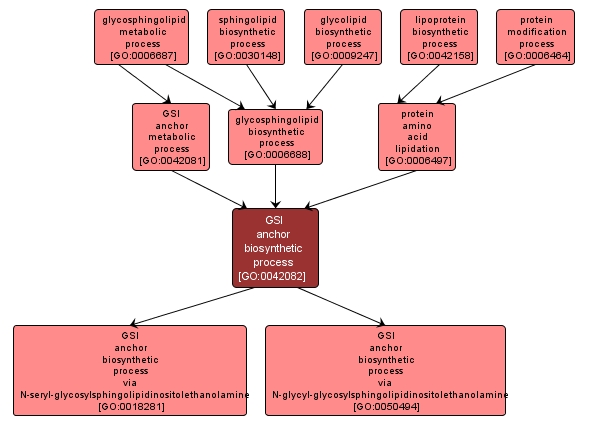| Desc: |
The chemical reactions and pathways resulting in the formation of a glycosylsphingolipidinositol (GSI) anchor that attaches some membrane proteins to the lipid bilayer of the cell membrane. The sphingolipid moiety is linked, via the C-6 hydroxyl residue of inositol to a carbohydrate chain which is itself linked to the protein via a ethanolamine phosphate moiety, its amino group forming an amide linkage with the C-terminal carboxyl of the protein. Some GSI anchors have variants on this canonical linkage. |














